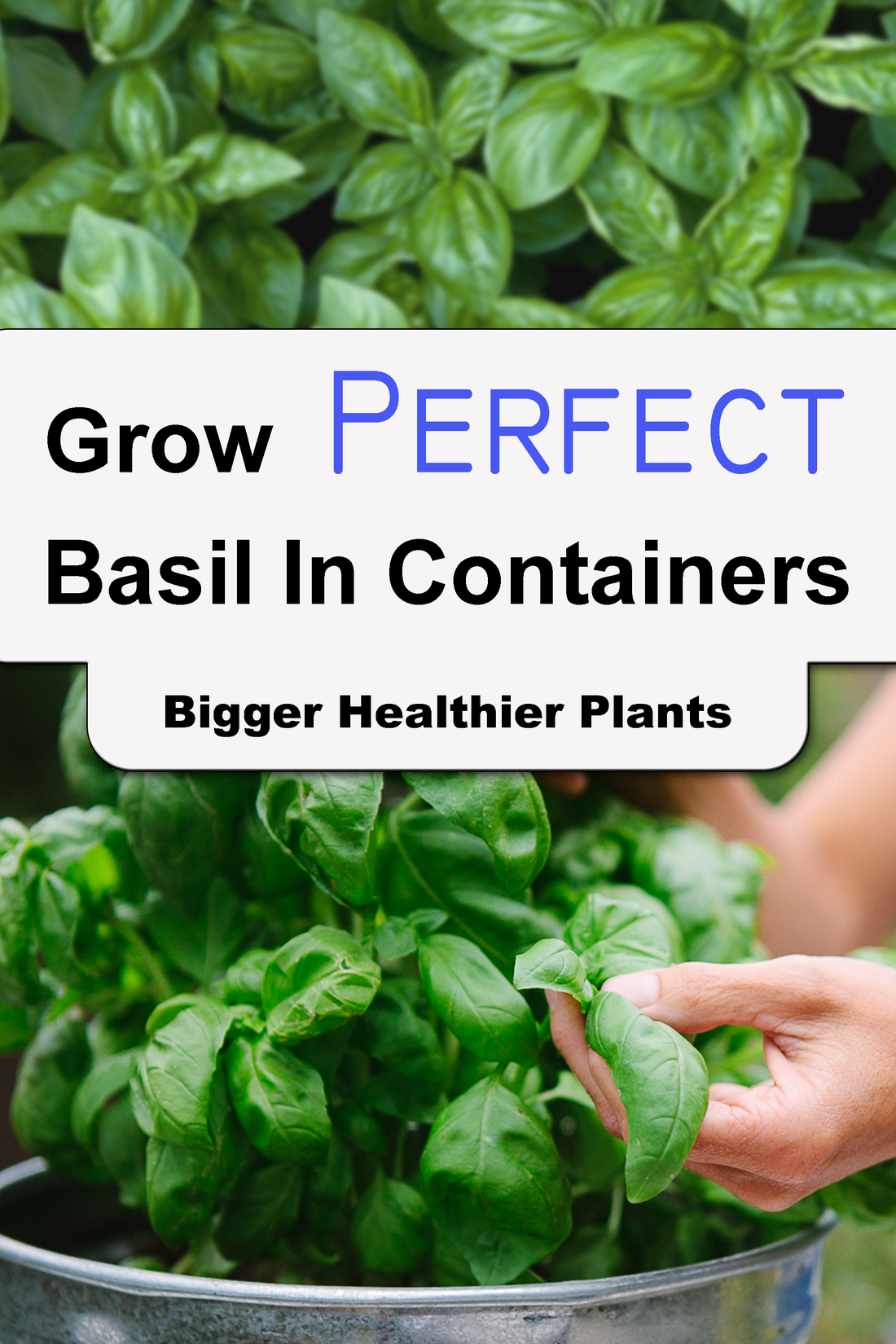Basil is a super plant when it comes to herbs. You can use it in a salad, as a garnish, in your recipes, as a pesto. Its unique and aromatic properties make it an essential part of an home garden. Regardless of what you're growing it for, more is always better. We all want to grow large bushy plants and harvest as much basil as possible. As a side note basil stores incredibly well, either dried or frozen. Retaining its flavour well after it is picked.
When garden space is limited, here's how you can grow the perfect basil every time using a container!

Selecting The Right Container
Basil is a relatively adaptive plant, meaning it can survive in most sizes of container. However if you're looking to grow large plants you'll want to take your time in deciding what sized container to use.
Basil does not grow relatively deep roots so don't waste your space and soil on incredibly deep pots, like you would for a tomato or pepper plant.
Find a pot that is 6-12 inches diameter, and 6-12" inches deep. The pot can be wider if you'd like, the critical aspect is that the pot is not too shallow.
Planting And Soil
That that you have a container selected you'll want to make sure you provide the best growing conditions for your plant to flourish.
In terms of soil, basil being a leafy green LOVES organic material and any source of Nitrogen. There is no need to over fertilize, but a nice well draining soil with adequate organic material to supply the plant(s) will be more than enough.
Space the plants/seed 4-8" apart. Keeping mind the allowable space your pot provides. Most containers can support multiple plants, so don't feel the need to grow only 1 plant per container. I tend to plant 2-3 basil plants per 12" container. If you're planting by seed, plant them around 1/4" deep.
Outdoor Conditions
In order to maximize the growth of your basil plants, make sure they receive at least 6 hours of sunlight a day. Basil plants thrive in warm sunny areas. Keep an eye out for pests such as rabbits or beetles, as they can severely affect your plants. Slightly elevating your plants will serve to protect them well from most ground pests.
Growing the plants indoors is also an great solution, and provides basil year round. Although basil prefers bright sunny spots in the garden, it can survive almost anywhere.
Pruning to Create Large Plants
Basil will grow large on its own if left unattended, but you came here to see how to grow large perfect basil. In order to help spur the plant on you will need to do a process referred to as "topping". Common for pepper growing, topping involves cutting a main stem, or side shoots just above a fork in the plant. This encourages the plant to focus its energy on the side shoots below the cut, and thus creates a bushier plant. By cutting the main stems and allowing the side shoots to grow out this creates a plant that almost duplicates its leaves. Make sure to keep feeding the plant, or at least ensure it has enough nutrients to support this rapid leaf growth.
This method is the secret to producing large productive basil plants.

Harvesting
So, you now have a bushy productive basil plant and you want to collect your harvest. It seems obvious that you would choose the larger more mature leaves that have had time to grow and are now ready to be picked and added to a salad. However, it is best to pick the smaller or more medium growth near the top instead. Basil plants rely on their leaves to produce energy and encourage this rapid growth, so removing the largest leaves only helps to slow the growth of the plant and create leggy plants. Leave those larger bottom leaves to keep producing energy, and select the smaller top leaves instead.
That's now you can go out and grow your own basil in whatever container you decide. Basil is a very forgiving plant and can be grown in almost any fashion. Keep these tips in mind to help you maximize your efforts and the short growing season.
What do you think of our tips?
Are you growing Basil this year?
Let us know down below in the comments, or get in contact with us on Instagram @RedHotSeeds

